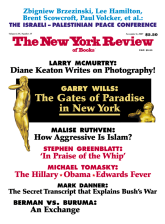In response to:
The Passion of Pasolini from the September 27, 2007 issue
To the Editors:
I am glad that Nathaniel Rich has written about Pier Paolo Pasolini [“The Passion of Pasolini,” NYR, September 27]. I am puzzled, however, that Rich neglected to discuss Pasolini’s Italian poetry. Pasolini was not just the major filmmaker of his generation in Italy but also the major poet. Pasolini considered himself above all a poet, even to the point of calling his films “film-poems.” Beginning in the early 1950s, Pasolini remade Italian poetry, liberating it from the hermeticism of the preceding generation of Montale, Quasimodo, and Ungaretti. A few days after his murder in 1975, I began translating some of Pasolini’s Italian poems, with the help of the Italian documentary filmmaker Luciano Martinengo. A collection, Pier Paolo Pasolini: Poems, was published by Random House in 1982 and John Calder in the UK in 1984 and was reissued in 1996 by Farrar, Straus and Giroux, an edition that is in print. The volume contains six major, very long poems (“The Ashes of Gramsci,” “The Tears of the Excavator,” “The Religion of My Time,” “Reality,” “A Desperate Vitality,” and “Plan of Future Works”) that place Pasolini among a handful of great poets of the last century, such as Neruda, Brecht, Césaire, Artaud, Vallejo, Pound, and Ginsberg. A second volume of shorter poems came out a few years after ours, from City Lights, Roman Poems, translated by Lawrence Ferlinghetti and Francesca Valente. It too is in print.
Norman MacAfee
New York City
Nathaniel Rich replies:
I thank Mr. MacAfee for drawing attention to his own translation of Pasolini’s poems, as well as to the elegant chapbook published by City Lights Books, which has the added virtue of containing a preface by Alberto Moravia. It’s true that many Italians consider Pasolini one of the major poets of the second half of the twentieth century—including Moravia, whom I quoted to this effect. Although I did discuss Pasolini’s early poetry, I felt that his films, journalism, political essays, novels, short stories, and personal correspondence better illustrated the points I wanted to address than his later poetry, despite its merits. For the same reason, I also did not include discussion of Pasolini’s plays, his literary and art criticism, his translations from Greek and Latin, and his drawings and paintings.
This Issue
November 8, 2007



